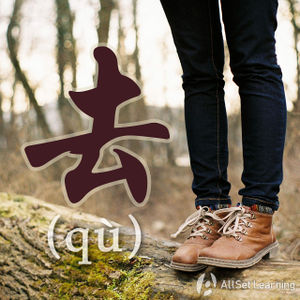Difference between revisions of "Result complement "-xiaqu""
| Line 52: | Line 52: | ||
{{Rel char|下}} | {{Rel char|下}} | ||
{{Rel char|去}} | {{Rel char|去}} | ||
| + | {{Similar|Potential complement "bu xia"}} | ||
| + | {{Similar|Result complement "-qilai"|起来}} | ||
| + | {{Similar|Resultative Complement "chu(lai)"|出来}} | ||
| + | {{Similar|Direction complement}} | ||
| + | {{Similar|Further Uses of Resultative Complement "qilai"}} | ||
{{Used for|Expressing result}} | {{Used for|Expressing result}} | ||
{{Structure|Complements}} | {{Structure|Complements}} | ||
{{Subprop|Result complement}} | {{Subprop|Result complement}} | ||
Revision as of 07:28, 16 October 2012
-
Level
-
Similar to
-
Used for
-
Keywords
Structure
下去 can be used as a result complement to talk about things continuing or carrying on.
It can be used in a positive way as well as in a negative way
Subject + Verb + 下去
Subject + Verb + 不 + 下去
Some examples:
- 不 能 一直 这样 做 下去。
- 这 个 菜 很 难吃 - 我 吃 不 下去。
- 我 走 不 下去了 - 把 我 留下 吧!
See also
Sources and further reading
Books
- New Practical Chinese Reader 3 (新实用汉语课本3) (pp. 184) →buy
- Integrated Chinese: Level 1, Part 2 (pp. 232) →buy
- Boya Chinese Lower Intermediate 2 (博雅汉语准中级加速篇) (pp. 137) →buy
- New Practical Chinese Reader 3 (新实用汉语课本3) (pp. 184) →buy



